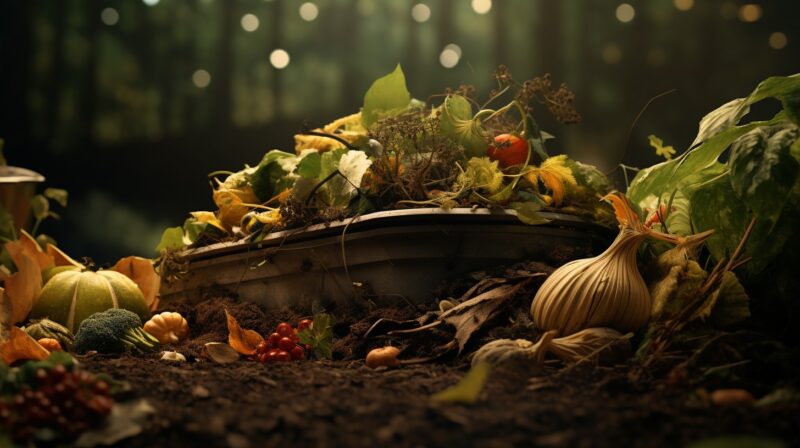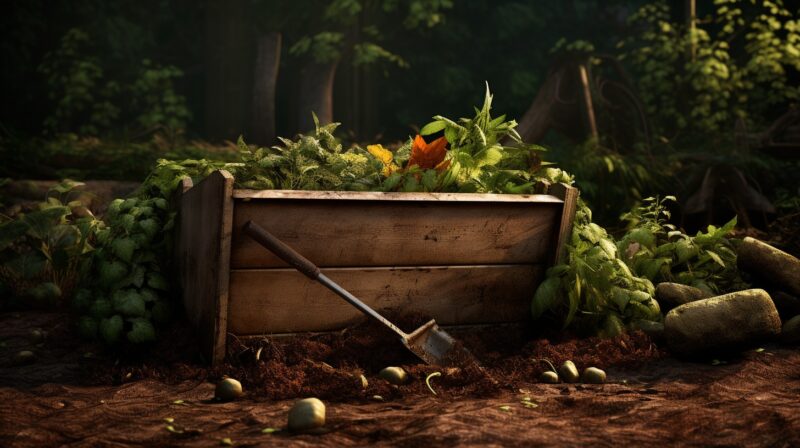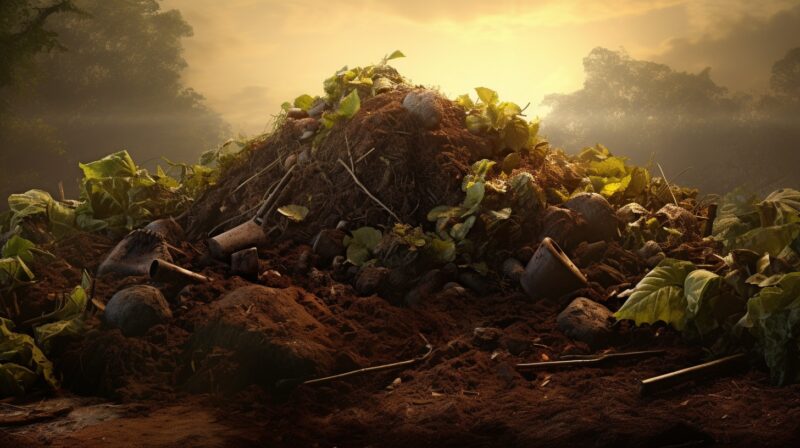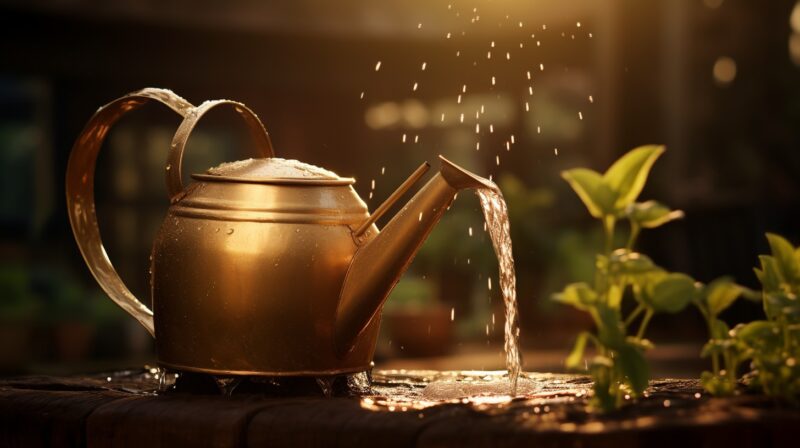Hi there, I’m Sarah Thompson, a gardener with years of hands-on experience in sustainable practices. I’m passionate about composting and I have extensive hands-on experience in eco-friendly practices. As you probably know, making a compost heat is not an easy thing to do, especially if you lack the knowledge.
Using a tumbler is not an easy thing to do, as well
That is why I want to provide you with my two cents on this subject, to make it easier for you.
Without further ado, let us begin.
1. Selecting and Preparing Your Compost Bin

The foundation of successful composting begins with the right compost bin. Your choice of bin can significantly influence the efficiency and ease of the composting process. The first step is choosing an appropriate bin. You have the option to purchase a ready-made bin, which comes in various sizes and styles to suit different garden spaces.
Alternatively, for those who prefer a DIY approach, constructing a bin from recycled materials like old pallets can be both cost-effective and environmentally friendly. The location of your bin is as crucial as the bin itself. It should be placed in an area that is well-drained to avoid waterlogging, which can hinder the decomposition process.
A level spot is essential to ensure stability. Additionally, positioning the bin in a location that receives some sunlight can help to accelerate the breakdown of organic matter. When setting up your bin, consider the ease of access for both depositing waste and eventually removing the finished product.
The bin should be conveniently located to encourage regular use, but not so close to living areas that it becomes a nuisance. Remember, the right device, bin or a tumbler, in the right place lays the groundwork for effective composting.
2. Utilizing Natural Helpers
Nature offers invaluable allies in the composting process, with earthworms playing a starring role. These creatures are not just beneficial; they are essential for transforming organic waste into nutrient-rich compost. In the enclosed environment of a compost bin, worms thrive.
They navigate through the layers of organic material, breaking it down into finer particles. This natural process not only speeds up decomposition but also enhances the quality of the compost produced. The presence of worms ensures that the nutrients are well mixed and readily available for plant use.
Start by providing a mix of green and brown materials. Green materials, like kitchen scraps and garden waste, provide the necessary moisture and nutrients, while brown materials, such as dried leaves and cardboard, offer a source of carbon.
This balance is crucial for creating an environment where worms can flourish. It’s also important to maintain the right moisture level in your bin. The contents should be as wet as a wrung-out sponge – moist enough to support worm life but not so wet that it becomes anaerobic.
With these conditions met, worms will naturally find their way into your compost bin and get to work, turning your waste into black gold for your garden.
3. Kitchen Waste Management
Efficient management of kitchen waste is a key component of successful composting. By segregating and collecting kitchen scraps, you can significantly contribute to the quality of your compost.
| Type of Waste | Suitable for Composting | Notes |
|---|---|---|
| Fruit and Vegetable Peels | Yes | Rich in nutrients, decompose quickly |
| Coffee Grounds | Yes | Add nitrogen, help in balancing pH |
| Eggshells | Yes | Provide calcium, should be crushed |
| Meat and Dairy Products | No | Attract pests, slow to decompose |
| Oils and Fats | No | Can create odor problems, attract rodents |
Using a small bin or container in your kitchen to collect daily waste makes the process more convenient. This container should be emptied regularly into your main compost bin to avoid odors and fruit flies. Biodegradable bags can be used for lining the kitchen container, making the transfer of waste to the main bin cleaner and easier.
Remember, while kitchen scraps are a great addition to your compost, not all kitchen waste is suitable. Experimenting can slow down the composting process. Stick to plant-based scraps for the best results.
4. Incorporating Garden Waste
Garden waste constitutes a significant portion of compostable material. Properly managing and incorporating this waste can greatly enhance the quality of your compost by inserting them in a tumbler or a bin.
- Grass Clippings: Add nitrogen, decompose quickly.
- Autumn Leaves: Provide carbon, improve aeration.
- Small Branches: Improve air circulation, should be chopped or shredded.
- Weeds: Can be added but ensure they haven’t seeded.
- Diseased Plants: Avoid adding as they can spread pathogens.
When adding garden waste, it’s important to balance green materials. This balance is crucial for maintaining the right carbon-to-nitrogen ratio, which is essential for effective composting. Also, chopping or shredding larger pieces of garden waste can speed up the decomposition process.
5. Composting Cotton Materials

Textile waste, particularly cotton, can be a valuable addition to your compost heap. Composting cotton materials is an excellent way to recycle fabric and reduce landfill waste.
| Type of Cotton Material | Compostable | Preparation |
|---|---|---|
| Old T-Shirts | Yes | Remove any non-cotton parts |
| Cotton Towels | Yes | Cut into smaller pieces |
| Cotton Socks | Yes | Ensure they are 100% cotton |
It’s also advisable to cut or tear larger items into smaller pieces to facilitate quicker decomposition. Remember, while cotton is compostable, it decomposes at a slower rate than kitchen and garden waste, so use it sparingly.
6. Aeration and Mixing
Aeration is a critical factor in the composting process, ensuring that microorganisms have the oxygen they need to break down organic matter efficiently. Regularly turning and mixing your compost heap is essential for introducing air into the system.
This can be done using a garden fork or a specialized compost turning tool. The process of turning not only aerates the compost but also helps to mix the different layers of materials, ensuring a uniform decomposition process.
The ideal frequency for turning your compost is about once a week, although this can vary depending on the size of your heap and the materials included. If you notice that your compost is becoming too compacted or developing an unpleasant odor, these are signs that more frequent aeration is needed.
In addition to turning, the structure of your compost heap can also promote aeration. Adding bulky materials like small branches or straw can create air pockets within the heap, enhancing oxygen flow. Remember, good aeration is key to avoiding a smelly, anaerobic compost heap and achieving a rich, crumbly compost.
7. Monitoring Moisture Levels

Maintaining the correct moisture level in your compost heap is crucial for successful decomposition. The compost should be moist, but not overly wet. Mositure content should be between 40% and 60%.
The ideal moisture content for a compost heap is similar to that of a wrung-out sponge. If the compost feels too dry, it can hinder the activity of the microorganisms responsible for breaking down the material.
Adding water with a watering can or hose can help. However, be cautious not to overwater, as excessive moisture can lead to anaerobic conditions, which slow down the decomposition process and can cause unpleasant odors.
If your compost feels too wet, you can add dry, brown materials like shredded newspaper, straw, or dry leaves. These materials will absorb excess moisture and help restore the balance. Regularly checking and adjusting the moisture level of your compost will ensure a healthy, active composting environment.
8. Evenly Mix Fresh and Dry
A balanced mix of green (fresh) and brown (dry) materials is essential for creating high-quality compost. This balance is key to maintaining the right carbon-to-nitrogen ratio. Green materials, such as kitchen scraps and fresh garden waste, provide nitrogen, which is crucial for the growth of microorganisms in the compost heap.
Brown materials, like dried leaves, straw, and shredded paper, gives energy to the microorganisms. A good rule of thumb is to aim for a roughly equal mix of green and brown materials, although this can vary depending on the specific materials used.
Layering these materials in your compost heap can help maintain this balance. For example, after adding a layer of green kitchen scraps, follow it with a layer of brown leaves or shredded paper.
Periodically mixing these layers together will ensure that the green and brown materials are well integrated, promoting efficient decomposition. This practice also helps to distribute moisture and microorganisms throughout the heap, further enhancing the composting process.
9. Water

Water plays a vital role in the composting process, acting as a catalyst for the biological breakdown of organic matter. The key to successful composting is to maintain a balance in moisture levels. If your compost heap appears dry and the decomposition process seems slow, adding a bit of water can help.
The goal is to achieve a consistent level of moisture throughout the heap. When watering your compost, use a gentle spray to avoid over-saturating any one area. It’s better to water little and often, rather than drenching the heap all at once.
This approach allows for even distribution of moisture, which is essential for the microorganisms at work in your compost. Remember, while water is necessary, too much can be detrimental. Overwatering can lead to a lack of oxygen in the heap, resulting in a slower, anaerobic composting process and potentially unpleasant odors.
10. Use Your Compost
The final step in the composting process is utilizing the finished product. Mature compost is a valuable resource for your garden, enriching the soil and supporting plant growth. Once your compost has transformed into a dark, crumbly material that resembles rich soil, it’s ready to use.
Spread it around your plants and garden beds to improve soil structure, increase nutrient content, and enhance moisture retention. This natural fertilizer can reduce your reliance on chemical alternatives, contributing to a more sustainable gardening practice.
Consider incorporating compost into potting mixes or using it as a top dressing for lawns. It’s also worth noting that while compost is incredibly beneficial for gardens, it should be used judiciously. Over-application can lead to nutrient imbalances in the soil.
Another option you can consider using for this goal is compost toilet. Before you use it, be sure to understand all ins and outs.
FAQs
What is the best compost combination?
The ideal compost combination balances ‘greens’ and ‘browns’. Greens are nitrogen-rich materials like vegetable scraps, fruit waste, and grass clippings, while browns are carbon-rich materials like dry leaves, straw, and cardboard.
What are 4 things we do not add to a compost heap?
Avoid adding meat, dairy products, oily foods, and diseased plants to your compost heap. Meat and dairy can attract pests and produce unpleasant odors. Oily foods can disrupt the process, and diseased plants might spread pathogens into the compost, potentially harming plants it’s applied to.
Can you put tea bags in compost?
Yes, you can put tea bags in compost, but with caution. Ensure the tea bags are made of compostable material (like paper or silk) and not plastic. If unsure, it’s safer to empty the tea leaves into the compost and discard the bag.
Can you put bread in compost?
You can put bread in compost, but do so sparingly and with caution. Bread can attract pests and mold. If you decide to compost bread, break it into small pieces and bury it deep within the compost pile to minimize these issues.
Epilogue
As we wrap up this comprehensive guide on creating a successful compost heap, I hope you feel empowered and inspired to start the composting process. Remember, composting is more than just a way to manage waste; it’s a step towards a more sustainable lifestyle and a healthier planet.
By following these, you’re not only enriching your garden but also contributing to a greener future. As an expert in this field, I encourage you to embrace the process, be patient, and enjoy the rewards of your efforts. Your garden will thank you with vibrant growth and vitality.








